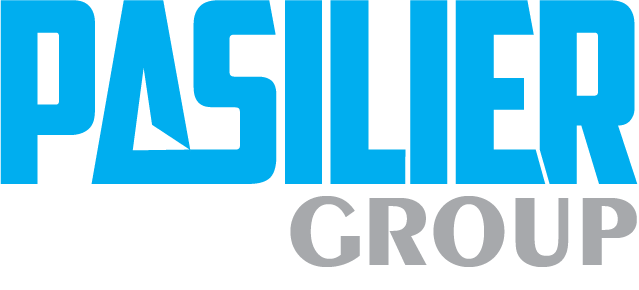Choosing a Welding Helmet: Balancing Safety, Productivity and Comfort
Choosing a Welding Helmet
by Jamy Bulan, Product Manager, Commercial Products, Lincoln Electric

A welder is only as effective as the level of personal protection he or she is getting on the job, and the helmet is one of the most important components in a welder’s arsenal of personal protective equipment. There are several factors to consider when choosing the proper welding helmet – some critical, some more related to personal style – but the primary objective is to ensure that the eyes and skin are protected from the hazardous by-products of the welding process: severe sparks and potentially damaging ultraviolet and infrared rays emitted by the arc.
The good news is that there are a variety of options on the market from numerous manufacturers. The challenge is in finding the one that’s best suited to your specific needs and your budget.
Safety and Application
First and foremost, your welding helmet must meet all industry-wide safety standards. These will vary from one country to another. In North America, for example, the applicable standards are ANSI Z87.1 in the United States and CAN/CSA Z94.3 in Canada. Both of these address such concerns as light leakage and flame and impact resistance. Before you make a purchase, be aware of the prevailing industry and regulatory standards when choosing a helmet.
Your choice should also be governed in large part by the type of welding you intend to do. The amperage ratings associated with various welding applications will generate different levels of light emission, and as such, will require different shade levels.

The type of welding you do will have an impact on your helmet choice – environment, welding process, material and occasional or all-day use.
Review the helmet’s light sensitivity settings. Top level auto-darkening helmets currently on the market have settings that can toggle between ranges, providing shades ranging from 6 to 9 or 9 to 13. This scale allows welders to optimize the shade for optimal protection and greater comfort on almost any welding, cutting or grinding application.
This type of flexibility can be beneficial to welders who make frequent changes between welding processes and applications, or who require changes in welding machine voltage, amperage, or wire-feed speed settings. For example, welding on thick materials at high amperages generally requires higher shade levels. Low amperage MIG or TIG welding is best performed with low shade levels to assure adequate visibility of the welding arc puddle.

Auto-darkening helmets include a range of shade levels and modes to provide optimal visibility and performance under different conditions – high and low amperage, cutting or grinding operations, working alone or surrounded by other arcs and other issues.
Tradition Versus Technology
Despite the prevalence of auto-darkening helmets on the market, some welders still prefer more traditional helmets with a traditional glass lens and a fixed shade that remains darkened at all times. While these helmets do provide rugged and inexpensive safety protection, they also have a few disadvantages.
Welding helmets featuring a fixed shade can create difficulties and discomfort on a number of levels, especially over an extended period of time. A welder has to lift the helmet every time he or she wants to examine the weld and joint, set his position and prepare for welding, and then flip the helmet back down again when it’s time to strike the arc. This repetitive movement can lead to neck strain and fatigue after a full day’s work. In addition, in tight or restricted spaces, it can be difficult to move the helmet up or down.

Check how the helmet balances on your head in the ‘up’ position. Too much weight in the wrong place will pull your head one way or the other and you’ll be fighting that force all day long.
For less experienced welders, it can be difficult to keep the MIG gun, TIG torch, or especially, stick electrode in the correct position to begin welding in the joint once the helmet is lowered into place. Improper positioning can result in poor weld starts, and ultimately weld defects. This can lead to lower quality, reduced productivity and an increased need for rework.
Regardless of your most typical welding processes and applications, or how often you might switch from one to another, consider using more advanced auto-darkening helmets with continuously variable controls that adjust the shade from a light state to a dark one and back. These helmets protect from harmful light emissions at all times and darken to almost any pre-selected shade in milliseconds, thanks to quick-changing LCD (liquid crystal display) technology in the auto-darkening cartridges.

Top level LCD cartridges typically offer user replaceable batteries and a digital screen showing battery level, shade level and access to multiple modes for different conditions, all accessed with sealed glove-ready buttons.
With auto-darkening helmets, welders can see clearly while the helmet is already in the down position, so that setting up to weld a joint can be done with the hood in position. These helmets permit more continuous work, reducing the need for frequent stops, readjustments, repositioning and restarts.
Auto darkening helmets are powered in different ways. Some feature replaceable lithium batteries, while others use a combination of solar power with a battery assist. The choice comes down to personal preference. Helmets with user-replaceable batteries offer the potential for longer total service life of the helmet, while those with non-user-replaceable batteries generally have a service life of five to seven years. On the other hand, welders who use helmets with replaceable batteries are advised to have replacement batteries on hand. If the helmet has an on-off switch – either on the internal or external controls – the user should remember to turn the helmet off after use to prolong battery life.
Ups and Downs
For anyone involved in extensive welding, a heavy helmet can significantly increase fatigue. Newer, lightweight helmets make welding safer, easier and more comfortable. Many weigh as little as 18 to 21 ounces (534 to 602 grams), even with a full-coverage shell. Some models, with smaller view sizes and more compact shells, can weigh as little as 15-31 ounces.
Try a helmet on to ensure a comfortable fit. Check to make sure that the headgear adjusts up, down, forward and back. Many headgear assemblies do not include a fore/aft adjustment to establish sufficient room between the helmet and the wearer’s face. This is an important concern for persons with large heads or prominent facial features. Also, make sure it can easily tighten around your head, and determine whether the rate of fall and degree of tilt allow it to lower in controlled manner. Some helmets have no damping function, which can be jarring for the wearer when it falls into position. Others allow the user to set the resistance, which controls the rate of fall and the end point at which the helmet stops when lowered into welding position.
Likewise, check to make sure the helmet locks softly into place when moved to the upward position. Is it well balanced in both the down and up positions, so that the weight of the helmet does not pull the head forward? Helmets with poor balance will add to neck strain and general fatigue over the course of a work shift.
Comfort Over Time
These concerns are especially relevant over time. Many welders wear their helmets for several hours in a single shift, oftentimes in an environment that’s hot, sweaty and less than immaculate. Given these conditions, the helmet needs to be a comfortable piece of gear, not just when it’s first put on but throughout the day. Any piece of gear that’s heavy, asymmetrical in weight, has uncomfortable edges or slides around the head due to perspiration can quickly become an annoyance in a six-or eight-hour shift.
The solution is a shell made of plastic that’s thin-walled but still durable enough to withstand the sparks and molten metal that can jump off the welding arc. The headgear inside the shell should be engineered to distribute the weight of the helmet as evenly as possible. When a helmet is designed with a single band, the full weight of the helmet is concentrated on that single band. Multiple bands displace the load, which makes the helmet feel lighter and more comfortable. The latest high level helmets include a pivot-style headgear that wraps around the base of the skull in a secure manner that enhances comfort at the same time. Additionally, look for adequate padding at all of the touch points, including brow and back of the neck.

New pivot-style headgear provide a better fit and greater comfort for long days over previous designs.
The Personal Touch
Because helmets are highly visible and worn constantly on the job, they’re also a great vehicle for welders to allow their personalities to shine through at a job site or on the shop floor. There’s more to them than merely safety and utility.
Today’s welding helmets come in a variety of colors, not just basic “Model T” black. Personalization doesn’t stop there. Many models offer personalization kits with decals, while others come with a range of pre-imprinted graphic themes, including flags, tattoo patterns, hot rods, skulls, comic book superheroes and even angel wings.



Graphic helmet treatments take many forms today, including matte or glossy finishes, skulls, flags, cartoons, hot rods and graphics intended to appeal to specific groups, like female welders or weekend project warriors.
Other Considerations
Choosing a welding helmet is a careful balance of work requirements, safety and performance features, personal style and budget. Even if your spending power is limited, there are plenty of affordable options that don’t sacrifice safety or comfort. This is especially true among the more high-profile helmet manufacturers.
Before making a purchase, ask about warranty options. The warranty – what’s covered and for how long – is a function of the manufacturer’s level of confidence in the quality and durability of their product. Most manufacturers provide a two-year warranty on their helmets, but some go farther. Lincoln Electric recently extended their warranty to three years on their VIKING™ 1840, 2450D and 3350 Series helmets.
Information is also emerging that can serve as a comparative guide to the optical quality of the helmet. For example, each of those new Lincoln Electric helmets offers an EN379 1-1-1-1 rating on optical clarity. This third party top score of 1 in each measure of clarity – including optical accuracy, diffusion of light, variations in luminous transmittance (light or dark areas of the lens) and angle dependence of luminous transmittance — translates into a clear view without stretching, dark areas, blurriness or problems looking through the lens at an angle.
For the long term, also it pays to inquire with the manufacturer or distributor about the availability of replacement parts such as lenses, cartridges, headgear and sweatbands. If these are not readily available, consider looking elsewhere for a helmet. If they are, buy some when you purchase the helmet. Even the best helmets will need replacement parts eventually, and it’s better to have some on hand than to have to interrupt your work schedule to wait for delivery.

Be sure you have ready access to replaceable parts, including cover lenses, sweat bands and headgear.
There may be numerous factors to consider when selecting the proper welding helmet, but the good news is that there are numerous options to choose from. Regardless of your circumstances and your budget, some careful research and shopping will ensure that you’re safe, productive and comfortable on the job.



